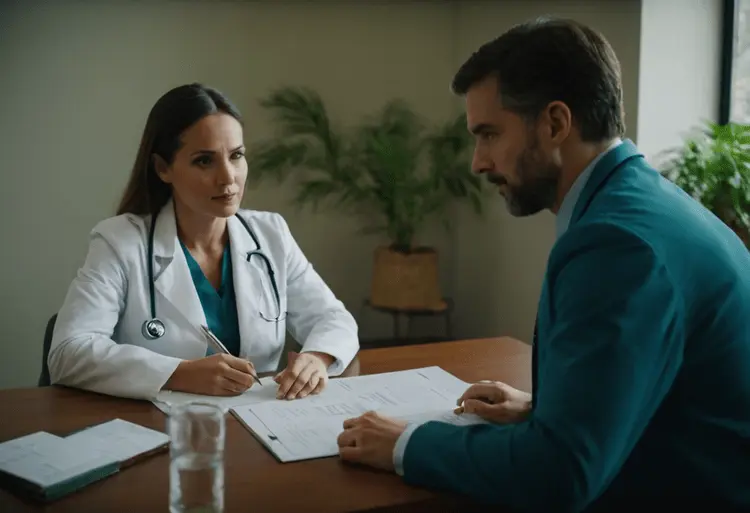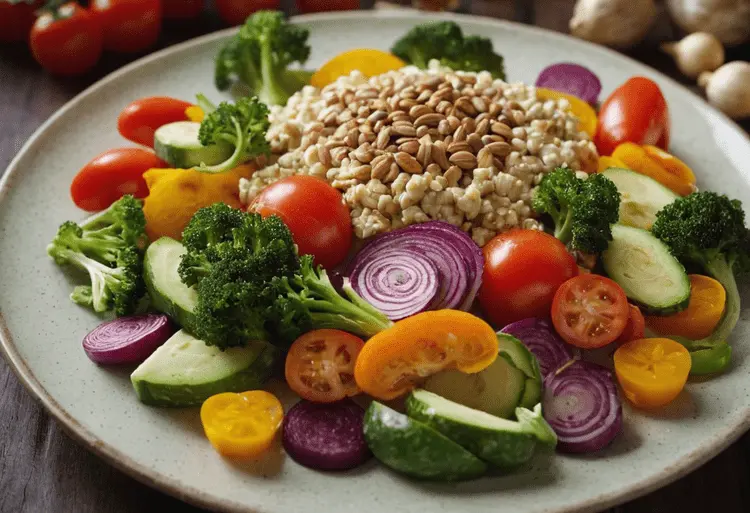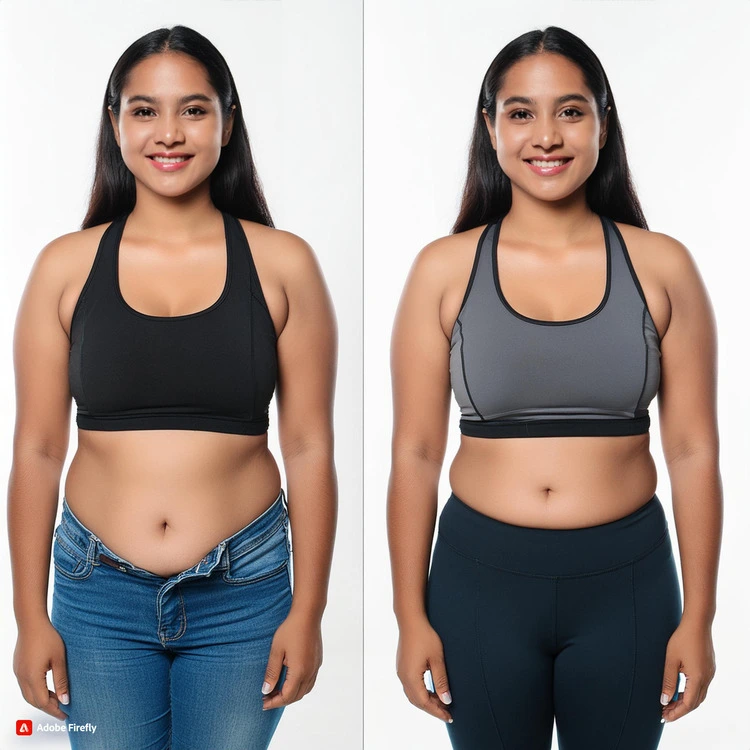The liver reduction diet is essential if you’re facing surgery and have an enlarged liver. This specialized diet can make procedures safer and less complicated. An oversized liver creates challenges for surgeons, potentially increasing your risk profile.
Don’t let liver size jeopardize the success of your surgery! Thankfully, a targeted solution exists to help you take control.
The liver reduction diet is designed to shrink your liver. This guide offers all the details, from how it works to practical tips for staying on track.
Liver Reduction Diet at a Glance:
- Shrink liver for safer surgery
- Low-carb, low-fat foods
- Doctor-supervised plan
- Improves surgical outcomes
- Maintain healthy lifestyle afterward
Table of contents
Understanding the Liver Reduction Diet

What is a Liver Reduction Diet (LRD)?
Think your liver might be a little too comfy-cozy? If you’re facing surgery, a liver reduction diet (LRD) could be your shrink ray!
This specialized diet isn’t about dropping dress sizes. It’s about reducing your liver’s size and fat content, making surgery safer and easier for your medical team.
Why is Liver Reduction Important?
Imagine trying to operate in a cramped space – that’s what a large, fatty liver can be like for surgeons.
An LRD helps clear the path for better visibility and reduces the risk of complications during procedures like bariatric surgery. Basically, a smaller liver means a smoother surgical experience.
Who Needs a Liver Reduction Diet?
Is an LRD on your radar? Typically, it’s recommended for:
- Individuals preparing for bariatric (weight loss) surgery
- People facing other surgeries where liver size is a concern
- Those with certain liver conditions (always consult your doctor)
How Does the Liver Reduction Diet Work?
The LRD isn’t magic, but it’s pretty clever! Think of your liver as a sugar storage tank. By drastically cutting carbs and calories, you force your body to use up those stored sugars (called glycogen).
As glycogen depletes, your liver shrinks up a bit. Want to learn more about how to manage your blood sugar levels while on an LRD? Head over to the American Diabetes Association for tailored advice.
Curious about how this diet might affect your medications? The Mayo Clinic has resources on managing medications during dietary changes.
Let’s dive deeper into the nitty-gritty of what you can and can’t eat on a liver reduction diet in the next section! Have you tried an LRD before? Share your experience in the comments below!
Ready to dive deeper into the world of liver shrinking diets? Get ready to discover even more safe and effective strategies for optimizing your liver health and achieving your surgical goals in our comprehensive guide: Liver Shrinking Diet Guide: Safe & Effective Strategies.
The Liver Reduction Diet Plan
Dietary Guidelines: What to Eat and Avoid
Picture this: a plate bursting with vibrant colors and wholesome goodness. That’s your liver reduction diet goal! Think lean proteins, piles of veggies, and carefully chosen healthy fats. But what about all the tempting treats? Let’s break it down:
- Foods to Embrace:
- Lean Protein: Chicken, fish, turkey, eggs, tofu, beans – these build muscle and keep you satisfied.
- Vibrant Veggies: Non-starchy varieties reign supreme! Think leafy greens, broccoli, peppers – low in calories, high in nutrients.
- Healthy Fats: A small amount from sources like avocado, nuts, and olive oil are essential.
- Low-Sugar Fruits: Berries in moderation can satisfy your sweet tooth.
- Foods to Wave Goodbye To (At Least for Now):
- Added Sugars: Candy, soda, even sweetened juices are off-limits.
- Refined Carbs: White bread, pasta, processed snacks are a no-go.
- High-Fat Fare: Fried foods, fatty meats – these hinder your liver-shrinking mission.
- Alcohol: It adds extra stress to your already hard-working liver.
Sample Meal Plans
Get ready for some liver reduction diet inspiration! Here’s a sample day at a 1200-calorie level:
- Breakfast: Protein-packed omelet with spinach and a side of berries.
- Lunch: Grilled chicken salad with a light olive oil-based dressing.
- Snack: Handful of almonds and a few veggie sticks.
- Dinner: Baked salmon with roasted broccoli and a small serving of quinoa.
Important Note: This is just an example! Your ideal calorie range and meal plans will depend on your individual needs.
Supplements and Hydration
Is your water bottle your new best friend? It should be! Proper hydration is essential on the liver reduction diet. Aim for plenty of water and sugar-free beverages throughout the day.
A multivitamin and mineral supplement can help fill any nutritional gaps. Some people might benefit from a fiber supplement under their doctor’s guidance to combat any potential digestive changes.
Milk-Based Liver Reduction Diet: Option for Simplicity
Want an even more streamlined approach? A milk-based liver reduction diet might be up your alley. This plan centers around a specific amount of milk daily, along with vitamins and limited fluids.
Is it right for you? Discuss the pros and cons with your healthcare team. This option may offer easier tracking but lacks the variety of whole foods.
Preparing for and Executing Your Liver Reduction Diet

Getting Professional Guidance
Got your doctor’s go-ahead for the liver reduction diet? Fantastic! Their involvement is absolutely crucial. They’ll tailor the plan for your unique needs, health conditions, and the timing of your surgery.
Timing and Phases
The liver reduction diet is usually a two-week sprint. But is there a way to ease into it? Often, yes! Your doctor might suggest a gradual transition phase to make the change less jarring.
Mindset and Motivation
Let’s be real, restrictive diets are tough. You might feel tired, hungry, and a bit cranky at times. How do you power through?
- Focus on the goal: A safer surgery and the start of your health transformation
- Find your support squad: Tell loved ones, maybe join an online group
- Celebrate small wins: Each day on the diet is a victory!
Dealing with Side Effects
Those initial side effects (like fatigue) can be a drag. But don’t worry, they usually pass quickly. Here’s how to handle them:
- Hydrate, hydrate, hydrate: Water is your best friend
- Listen to your body: Rest when you need it
- Talk to your doctor: If anything feels seriously off, get their advice
Let me know if you have any questions about side effects – I’ve been there myself! Feel free to drop a comment or tag me on social media.
Beyond the Liver Reduction Diet
Okay, you’ve successfully navigated the liver shrinking diet. Surgery is hopefully in the rearview mirror! But, now what? Is this just a temporary fix, or the start of something bigger?
Post-Surgery Nutrition: The Next Chapter
First things first, your body needs time to heal. Your doctor will guide you on transitioning back to a balanced diet. Think of it as building a solid foundation for lasting health. Focus on:
- Whole foods galore: Fruits, veggies, whole grains – the good stuff!
- Quality protein: Important for rebuilding and repair.
- Limit the baddies: Sugar, unhealthy fats… you know the drill.
Long-Term Health and Wellness: Your Choice
The liver shrinking diet can be a wake-up call. Is this your chance to create lasting lifestyle changes? It’s up to you! Consider this:
- Weight management: Use the momentum for continued success.
- Liver love: Healthy habits keep your liver happy long-term.
- Overall wellbeing: Nutrition impacts way more than just your liver.
Need some inspiration for those healthy meals? Check out some tried-and-true recipes for post-surgery nourishment and tasty low-carb meals. Experiment with new finds and discover exciting flavors while still sticking within your health goals!
Also, support systems are powerful! Find an online community with people facing similar health journeys and goals. Share experiences, get encouragement, and realize you’re not alone in building a healthier you!
Let me know how your post-surgery dietary changes are going! Did any of these tips resonate with you? Tag me on social media, or drop a comment below – I’d love to hear and learn from your experiences!
Important Note: These are general guidelines. Always consult with your doctor or a registered dietitian for personalized advice.
Advanced Topics and Special Considerations

Liver Reduction Diet and Ketosis
The liver reduction diet is super restrictive – it drastically cuts carbs. Did you know this can sometimes put your body into ketosis? Ketosis is when your body starts burning fat for fuel instead of its usual go-to, carbohydrates.
- Is ketosis good or bad on the liver shrinking diet? There can be benefits, but always talk to your doctor first.
- It’s important to monitor yourself for signs of ketosis. These might include a slightly fruity breath odor, increased thirst, or changes in energy levels.
Specific Medical Conditions
The liver shrinking diet needs careful consideration if you have certain health conditions.
- Diabetes: Your blood sugar could get out of whack on such a low-carb diet. Closely monitor your blood sugar and work with your doctor to adjust medications.
- Liver Disease: If you have a pre-existing liver condition, the liver reduction diet needs extra special guidance from your doctor.
- Medications: Dietary changes can interact with medications you’re taking. Before starting the liver reduction diet, review your meds with your doctor or pharmacist.
The Role of Exercise
Can you exercise on the liver reduction diet? Generally, some light to moderate exercise can be beneficial. But remember, you’ll be on fewer calories, so don’t push yourself too hard. Focus on activities you enjoy and listen to your body’s signals for rest.
Remember: Always consult your doctor before starting the liver reduction diet and making any changes to your exercise routine.
Ready for the next step in your health journey? After successfully shrinking your liver, you’ll want to ensure a smooth recovery from surgery. Discover the essential soft food diet that aids healing and minimizes discomfort after oral procedures.
Liver Reduction Diet FAQs: Your Questions, Answered
The liver shrinking diet is designed for rapid results in preparation for surgery. Always work with your doctor for the safest, most effective plan.
Rice is generally discouraged on the liver shrinking diet due to its carbohydrate content. Focus on lower-carb alternatives like cauliflower rice.
Your doctor will likely monitor your progress with measurements and imaging tests. You may also notice some reduction in abdominal fullness.
Typically, you’ll see results within two weeks. Individual response times may vary.
For most people preparing for surgery, it’s safe when done under medical supervision.
Definitely! Consult your doctor to explore suitable options based on your needs.
Light exercise might be okay. Listen to your body and prioritize rest.
The liver reduction diet is a tool. Focus on long-term healthy habits to maintain weight loss.